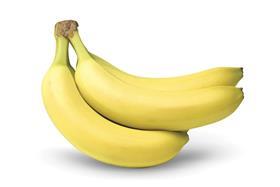
Japan’s overall fruit imports fell by 8.4 per cent in the first half of 2010 versus the same period last year, dragged down by a 15 per cent drop in banana import volumes.
According to the latest figures from the Ministry of Finance, banana imports fell to 565,141 tonnes between January and June, down from 666,134 tonnes in the same period last year. Import values showed a more marked decline, sliding 22.5 per cent from ¥51.1bn to ¥39.6bn.
The drop reflects the weakening of the banana diet craze that swept Japan between September 2008 and August 2009. The consumption fad drove monthly expenditure on bananas to record levels during this period, which ran through the first half of last year.
While spending on bananas has declined since September 2009, importers nevertheless point out that consumption remains well up on previous years. “Consumption and demand for bananas are still relatively active,” Junichi Moriya of major import company Tokyo Seika told Fruitnet.com
Bananas remain the undisputed king of Japan’s fresh fruit import market, accounting for well over half the total import volumes. Overall imports for the first half of 2010 fell to 952,965 tonnes worth ¥98bn compared with 1.04m tonnes worth ¥105.2bn in the same period of 2009.
Imports of grapefruit, the second-largest category, remained relatively stable, with 113,681 tonnes worth ¥11.3bn recorded.
Pineapple imports also slipped, falling from 71,568 tonnes worth ¥4.5bn to 67,031 tonnes worth ¥3.98bn, but importers report the decline is more due to supply- rather than demand-related factors. “The import volume was down due to the fact production volumes were down,” Mr Moriya confirmed. “Demand here in Japan `for pineapples` is still fair.”
On the upside, orange imports recorded a strong run in the first half of 2010. Volumes increased 15.5 per cent to 70,533 tonnes worth ¥6.8bn, reflecting a strong year for California navels. “The production and supply situation for domestic fruits, especially mandarins, over the first half of the year has not been good,” Mr Moriya observed. “During the same period, the quality and flavour of US oranges has been excellent, and eventually consumers and retailers showed their interest in US oranges.”
Avocados were another category to notch notable gains, with import volumes jumping to 22,329 tonnes worth ¥5bn, up from 14,648 tonnes worth ¥3.6bn in the same period of 2009. The primary driver of growth was a reduction in import costs, with the average landed price dropping 7.3 per cent to ¥228 per kg, according to importers.
“The lower import costs allowed retailers to sell avocados at less than ¥100 per piece,” said Mr Moriya. “This price level is so acceptable for consumers and users.”
A promotional campaign by the Mexican avocado industry late last year also contributed to the growth in volumes.



